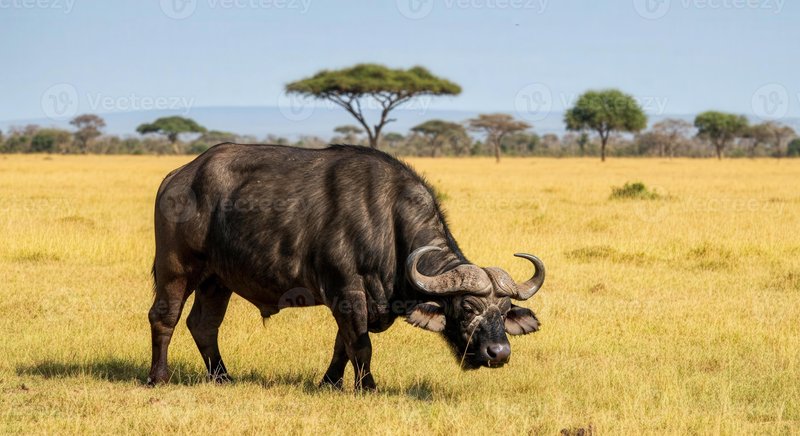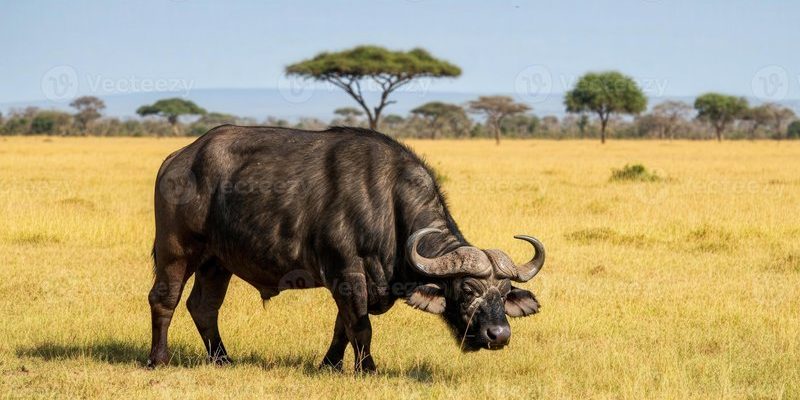
The buffalo is more than just an impressive animal; it’s a keystone species. This means its presence—or absence—significantly impacts the environment around it. If you think about an orchestra, the buffalo is like the conductor, guiding the flow of life in its habitat. From enriching the soil to supporting other wildlife, buffalo influence their ecosystems in numerous ways. So, let’s dive a bit deeper and explore just how buffalo contribute to the balance and health of their surroundings.
The History of Buffalo in North America
Buffalo have roamed the North American plains for thousands of years. Once, there were millions of them stretching across the continent. Indigenous peoples relied on these majestic creatures for food, clothing, and tools. They understood the buffalo’s importance not just as a food source but as a part of their culture and spirituality. Sadly, by the late 1800s, rampant hunting and habitat destruction decimated buffalo populations, bringing them close to extinction.
What’s fascinating is that buffalo aren’t just big animals; they’re also a part of a larger story about our environment. Their near extinction highlighted the interconnectedness of species and habitats. When buffalo numbers dwindled, it affected not just other animals but plant life and even the soil health in their ecosystems. This historic decline is a crucial reminder of how species can shape the environment around them.
How Buffalo Shape Their Habitat
Buffalo have a unique way of interacting with their environment that fosters biodiversity. As they graze, they help maintain grassland ecosystems by controlling plant growth. Here’s how it works:
- Grazing Patterns: Buffalo typically graze in herds, which allows them to selectively eat certain grasses while leaving others to grow. This keeps the grasslands healthy and varied.
- Fertilizing the Soil: Their droppings enrich the soil with nutrients, promoting a vibrant ecosystem. Think of it as nature’s own fertilizer, helping new plants grow and flourish.
- Creating Habitats: As buffalo move through the grasslands, they create pathways and clearings that allow other species to thrive. These areas become homes for smaller animals and insects.
By doing this, buffalo not only sustain their own population but also support numerous other species, ensuring a healthy and diverse ecosystem. You might be wondering how this all interacts—essentially, buffalo help maintain the balance between various plants and animals, preventing any one species from dominating the landscape.
Buffalo as Keystone Species
Being a keystone species means that buffalo have a disproportionately large impact on their environment relative to their abundance. Take a moment to consider what that means. If you remove a keystone species, you might unwittingly cause a cascade of changes that could harm the ecosystem.
When buffalo were removed from their habitats, the grasslands began to suffer. Without their grazing, certain grasses became overgrown, which could choke out other plants and reduce biodiversity. Studies show that areas where buffalo graze have more diverse plant life, which in turn supports more insects, birds, and mammals. This interconnected web is crucial for keeping ecosystems healthy.
You could say buffalo act like natural gardeners, pruning plants and helping the landscape flourish. When we understand their role, it’s easier to see why protecting buffalo populations is essential not only for them but for countless other species that depend on a balanced ecosystem.
The Buffalo’s Relationship with Other Wildlife
Buffalo don’t live in isolation; they interact with many other species. This interaction creates a vibrant web of life in their habitat. For example, when buffalo graze, they disturb the soil, which can help seeds take root. Smaller animals, like prairie dogs or rabbits, often make homes in the areas buffalo frequent, benefiting from the short grasses and open spaces created by the buffalo’s grazing.
Birds, too, play a role in this dynamic. Many species, such as the American badger, rely on buffalo for food by feasting on insects stirred up by their movements. It’s a classic example of how one species can support many others, like the way a tree provides shelter for birds and shade for ground-dwelling creatures.
This web of relationships shows that the buffalo holds a special place in the ecosystem. By protecting buffalo, we’re not just safeguarding a single species; we’re investing in the whole community of life that depends on them. It’s a beautiful yet complex dance of survival, where every animal counts.
Conservation Efforts and Their Importance
With buffalo populations once on the brink, conservation efforts have become necessary to ensure their survival. Organizations dedicated to wildlife preservation are working hard to protect these majestic animals. Restoration efforts often include establishing protected areas where buffalo can roam freely without the threat of hunting or habitat loss.
You might be wondering what you can do to help. Supporting local wildlife organizations or visiting national parks known for buffalo herds can make a difference. Some programs even allow you to adopt a buffalo, contributing directly to conservation efforts.
As we work toward protecting buffalo, it’s essential to recognize the ripple effects their conservation has on the entire ecosystem. Keeping buffalo numbers stable means protecting countless other species that rely on the same habitats. It’s a collective effort, and every little bit helps.
The Cultural Significance of Buffalo
Beyond their ecological role, buffalo hold significant cultural importance, particularly among Indigenous tribes in North America. For many, the buffalo symbolizes strength, resilience, and connection to the land. Traditional practices often emphasize respect for the buffalo, recognizing that taking from it requires giving back to the earth.
This cultural relationship goes beyond mere symbolism. Many Indigenous communities advocate for buffalo restoration projects and sustainable practices that align with their values of stewardship. By honoring the buffalo, they honor their heritage and the intricate relationship between people and nature.
In light of this, supporting buffalo conservation isn’t just about protecting an animal; it’s about acknowledging and respecting the cultures that have long viewed buffalo as vital to their way of life.
The buffalo’s role in its ecosystem is nothing short of remarkable. From shaping grasslands to supporting other wildlife, these animals are central to maintaining ecological balance. By fostering biodiversity, providing nutrients to the soil, and creating habitats for other species, buffalo exemplify how interconnected nature truly is.
As we reflect on the past challenges faced by buffalo, we should take pride in the ongoing efforts to restore their populations and habitats. Protecting buffalo is not just about saving a species; it’s about preserving a significant part of our natural heritage.
Just like the sun that warms the plains, buffalo light up their ecosystems with life. So next time you think of the buffalo, remember it’s more than a powerful creature; it’s a vital link in the chain of life—one we should all strive to protect.

